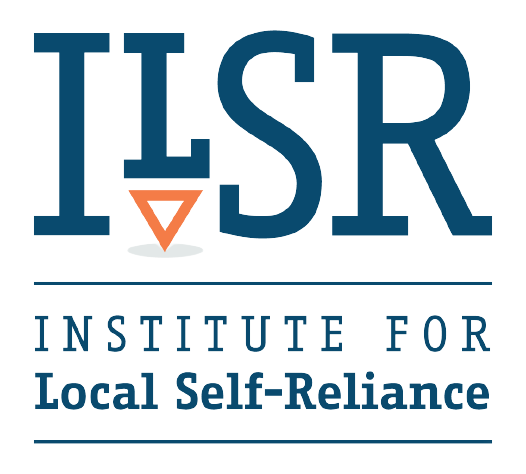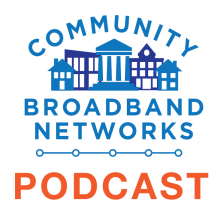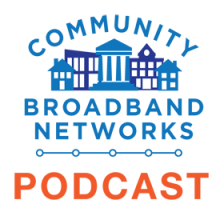
Fast, affordable Internet access for all.

In a recently published piece in The American Prospect, Sean Gonsalves, ILSR's Community Broadband Networks Initiative Associate Director for Communications, reports on four cities across the U.S. that are well prepared to deal with the demise of the Affordable Connectivity Program (ACP).
The article – titled "The Municipal Broadband Solution" – begins by laying out why Congress created the popular program and how letting the ACP go bankrupt undermines the national "Internet For All" Initiative now underway. However, while digital equity advocates across the nation rightly lament the demise of the program, the focus of the article is on cities that have figured out how to deliver afforable high-quality Internet access even without the ACP.
Here's a few excerpts:
Congress created the ACP to soften a harsh reality: Americans pay among the highest prices for broadband of any developed nation in the world, leaving tens of millions unable to afford internet service—something experts have long noted is a telltale sign of a broken market dominated by monopoly providers, and is at the very heart of why the U.S. digital divide is as massive as it is.
However, although federal lawmakers have known for over a year that the fund would be bankrupt by this spring, GOP congressional leaders have not budged on even bipartisan attempts to save the ACP, prompting the Federal Communications Commission (FCC) to announce in January that the agency was being forced to wind down the popular program.
It’s a major setback for the “Internet for All” effort, especially in light of a recent FCC survey that found 29 percent of ACP beneficiaries would be left without any home internet service whatsoever without the benefit, in an age when internet connectivity is a necessity for meaningful participation in 21st-century society.
The American Prospect recently published an analysis – "How Monopolies and Maps Are Killing ‘Internet for All’" – authored by our own Sean Gonsalves that lays out why the federally-backed “Internet For All” initiative will likely fall short of its aspirational goals.
It begins with facts-on-the-ground reporting about the estimated 37,000 households that do not have high-quality access to the Internet in Oakland, California and how cities across the nation are plagued with similar challenges – challenges many digital advocates say is “digital redlining.”
Here's a few excerpts:
“It would be reasonable to think the Biden administration’s $1.2 trillion bipartisan infrastructure law, passed by Congress in November 2021, would change all of this. A significant part of the law devotes $65 billion to a moon shot mission, involving all 50 states and U.S. territories, to bridge the digital divide once and for all. It includes funding to build new modern networks, and other programs to address barriers to broadband adoption, like the Affordable Connectivity Program, which helps eligible low-income households pay for pricey internet bills, as well as initiatives that offer digital skills training and a mandate for the FCC to adopt rules ‘to prevent and eliminate digital discrimination.’”
“Similar to when the federal government set out to bring electricity to every household in America a century ago, the Biden administration intends to do the same with broadband, labeling this historic investment the ‘Internet for All’ initiative.”
“But what hasn’t dawned on most federal and state lawmakers—or at least, it has not been admitted publicly—is that the trajectory we are on will not lead to Internet for All, but something more like Internet for Some.”
You can read the entire story on the American Prospect website here.

This week on a special edition of the podcast, join us as we begin with a discussion with local leaders from East Carroll Parish, Louisiana. First Featured on ILSR's Building Local Power podcast, this first segment reveals the hurdles the leaders faced with expensive and inadequate broadband service.
Despite resistance from a regional monopoly provider, their grassroots efforts to enhance Internet access triumphed. Explore with them on how they overcame obstacles and misleading data that was hindering competition.
Lest you think the situation in East Carroll Parish wasn't that bad, in the second segment we journey back to a 2014 episode of the Community Broadband Bits podcast. Christopher and Lisa parody the (based-on-real-life!) experience of trying to talk to the customer service of Big Cable companies, maybe hitting a little too close to home.
This show is 41 minutes long and can be played on this page or via Apple Podcasts or the tool of your choice using this feed.
Transcript below.
We want your feedback and suggestions for the show-please e-mail us or leave a comment below.
Listen to other episodes or view all episodes in our index. See other podcasts from the Institute for Local Self-Reliance.
Thanks to Arne Huseby for the music. The song is Warm Duck Shuffle and is licensed under a Creative Commons Attribution (3.0) license.

Join us Thursday, September 28th at 3pm ET for the latest episode of the Connect This! Show. Co-hosts Christopher Mitchell (ILSR) and Travis Carter (USI Fiber) will be joined by regular guest Doug Dawson (CCG Consulting) and Kim McKinley (UTOPIA Fiber), with special guest Sean Gonsalves (ILSR) to tackle the promised return of net neutrality rules by the FCC, Google Fiber's recently announced ACP plans, why the word "monopoly" seems in such short supply in the BEAD plans states have begun to file, and the future of spectrum sharing in the United States.
Email us at broadband@communitynets.org with feedback and ideas for the show.
Subscribe to the show using this feed or find it on the Connect This! page, and watch on LinkedIn, on YouTube Live, on Facebook live, or below.

This week on the show, Christopher is joined once again by Sean Gonsalves, Associate Director for Communications for the Community Broadband Networks initiative at the Institute for Local Self-Reliance. After a short stop to talk about the establishment of a new municipal network in Timnath, Colorado, Christopher and Sean get down to talking about the BEAD 5-Year Plans that states are filing with NTIA to get their hands on the first tranche of what will be an historic pot of federal funds for new broadband investment.
Some states, like Maine and Vermont, Sean shares, are doing lots right: setting high bars for new infrastructure, listening to communities about their needs, folding in digital equity initiatives, and thinking about how to reach the last households that BEAD will fall short of. Others, like Pennsylvania, seem written with the intent to waste public money and leaves tens of thousands of households stranded with poor or no service - in other words, exactly what the monopoly cable and telephone companies want.
This show is 37 minutes long and can be played on this page or via Apple Podcasts or the tool of your choice using this feed.
Transcript below.
We want your feedback and suggestions for the show-please e-mail us or leave a comment below.
Listen to other episodes here or view all episodes in our index. See other podcasts from the Institute for Local Self-Reliance here.
Thanks to Arne Huseby for the music. The song is Warm Duck Shuffle and is licensed under a Creative Commons Attribution (3.0) license.
Hoping to ensure it can actually spend its share of historic broadband funding, Montana lawmakers have tweaked the state’s restrictions on community broadband. However, experts say most of the state law’s pointless restrictions remain intact, undermining state efforts to bring affordable, next-generation broadband access to Montana residents.
Montana’s one of seventeen states that have passed laws banning or restricting municipal broadband networks. The bills are usually ghost written by telecom monopoly lawyers, and in many states either outright prohibit community-owned broadband networks, or are designed to make funding and expanding such networks untenable.
Montana’s specific law, Mon. Code Ann. § 2-17-603, only allow municipalities to build and deliver broadband alternatives if there are no other private companies offering broadband within the municipality’s jurisdiction, or if the municipality can offer “advanced services” that are not available from incumbents.
Covid home schooling and telecommuting needs highlighted the counterproductive nature of such restrictions, driving some states—such as Arkansas and Washington—to dramatically roll back their restrictions.
Last November we noted how New York City had scrapped its longstanding plan to build a promising open access fiber network. Not only did that stark reversal leave many partner ISPs high and dry after years of planning, some local community-run ISPs now say the city is forcing them to remove existing free service to affordable housing developments.
People’s Choice Communications, a small NYC cooperative cobbled together by striking Charter Communications workers, was one of several ISPs left in a lurch by the sudden reversal by the Adams administration.
Adding insult to injury, the ISP is now being told by the city to pull existing service provided for free to marginalized communities in The Bronx.
New York City’s original master plan was poised to be a game changer when it was first introduced back in 2020. The plan not only included a pilot program designed to bring affordable broadband to 450,000 residents of New York City Housing Authority (NYCHA) buildings, but a plan to spend $156 million on a pilot open access fiber network.
The proposal was to showcase the real-world benefits of the open access model, which data suggests results in significantly lower costs and higher quality service thanks to increased competition. If successful, the city would have then considered a bigger $2.1 billion plan to deploy such a network citywide, providing a template for major metropolitan areas nationwide.
New Mayor, Old Playbook
With the election of a new mayor, everything changed.

This week on the podcast, Christopher is joined by Harold Feld, Senior Vice President at Public Knowledge. Feld is a staple of the field, and has been a consistent voice not only for consumers but broadband advocates of all types for more than two decades.
The show takes on a reflective nature, as they talk about theories of change in the context of doing broadband policy today. Harold shares how he thinks of the progress that gets made in the long term by aligning the corporate incentive with the public interest. He shares coming to terms with having lots of hard days, the power of fighting battles you expect to lose, and learning, getting better, and building powerful coalitions along the way. Harold and Christopher end the show by talking about some examples of the latter, including important wins like the Rural Tribal Priority Window and the expansion of community networks of all shapes and sizes.
This show is 48 minutes long and can be played on this page or via Apple Podcasts or the tool of your choice using this feed.
Transcript below.
We want your feedback and suggestions for the show-please e-mail us or leave a comment below.
Listen to other episodes here or view all episodes in our index. See other podcasts from the Institute for Local Self-Reliance here.
Thanks to Arne Huseby for the music. The song is Warm Duck Shuffle and is licensed under a Creative Commons Attribution (3.0) license.
While cooperatives, utilities, and municipalities are seeing a welcome portion of Covid relief and infrastructure bill funding, the nation’s two biggest cable broadband monopolies continue to hoover up the lion’s share of most new broadband infrastructure grants.
All told, the American Rescue Plan Act and Infrastructure Investment and Jobs Act will deliver more than $50 billion in new funding for broadband infrastructure. And while cooperatives and utilities have been big winners in states like Tennessee, a recent breakdown by Fierce Telecom of money awarded so far shows that cable monopolies have been the biggest winners by far.
While cooperatives, utilities, and municipalities are seeing a welcome portion of Covid relief and infrastructure bill funding, the nation’s two biggest cable broadband monopolies continue to hoover up the lion’s share of most new broadband infrastructure grants.
All told, the American Rescue Plan Act and Infrastructure Investment and Jobs Act will deliver more than $50 billion in new funding for broadband infrastructure. And while cooperatives and utilities have been big winners in states like Tennessee, a recent breakdown by Fierce Telecom of money awarded so far shows that cable monopolies have been the biggest winners by far.
As of September, Charter (which sells service under the Spectrum brand) had won more than $170.8 million in grants across Ohio ($51 million), Kentucky ($49.9 million) Indiana ($27 million), Georgia ($12.2 million), Maryland ($8.5 million), Louisiana ($7.88 million), Alabama ($7.26 million), Wisconsin ($5.9 million) and Pennsylvania ($1.2 million).